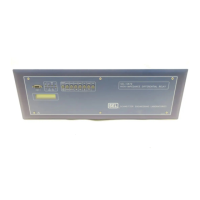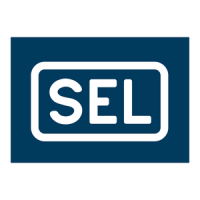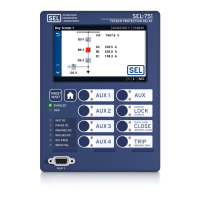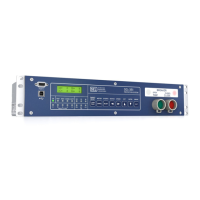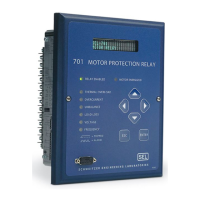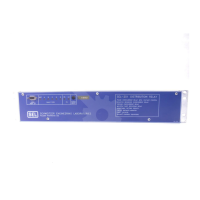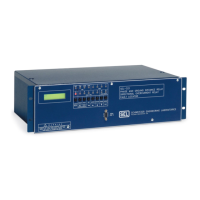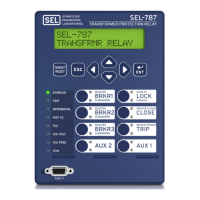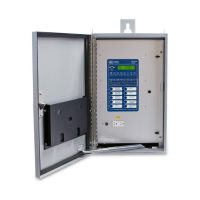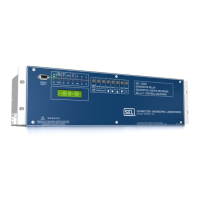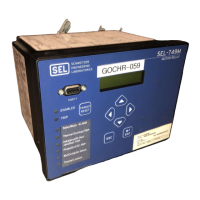Glossary Page: 261 Access Level Relay command level with specified information and commands, requiring password for higher levels.
Differential Protection Protection scheme responding to difference between incoming and outgoing electrical quantities.
Event Report Text-based data collection for triggering conditions, showing measurements and states. Use for performance analysis.
Fast Meter SEL binary serial port command for collecting metering data.
Ground Overcurrent Elements Elements operating on residual ground calculation exceeding thresholds, asserting when calculation exceeds thresholds.
Local Bits Relay Word bit outputs from local control switches accessed via front panel.
Maintenance Testing Confirms accurate AC measurements and correct function of auxiliary equipment, logic, and protection.
Optoisolated Input Relay inputs for monitoring external circuits; connect to relay/breaker contacts.
Peak Demand Metering Max demand and timestamp for currents, powers; stores peak values, overwriting daily if larger.
Phase Overcurrent Element Elements operating by comparing phase current to setting, asserting when current exceeds thresholds.
Relay Word Bit Single relay element or logic result; equals logical 1 (true) or 0 (false). Used in SELOGIC equations.
Self-Test Function verifying critical device subsystem operation and detecting out-of-tolerance conditions.
Sequential Events Recorder Relay function storing date/time of assertion/deassertion of Relay Word bits for event order and timing.
Glossary Page: 261 Access Level Relay command level with specified information and commands, requiring password for higher levels.
Differential Protection Protection scheme responding to difference between incoming and outgoing electrical quantities.
Event Report Text-based data collection for triggering conditions, showing measurements and states. Use for performance analysis.
Fast Meter SEL binary serial port command for collecting metering data.
Ground Overcurrent Elements Elements operating on residual ground calculation exceeding thresholds, asserting when calculation exceeds thresholds.
Local Bits Relay Word bit outputs from local control switches accessed via front panel.
Maintenance Testing Confirms accurate AC measurements and correct function of auxiliary equipment, logic, and protection.
Optoisolated Input Relay inputs for monitoring external circuits; connect to relay/breaker contacts.
Peak Demand Metering Max demand and timestamp for currents, powers; stores peak values, overwriting daily if larger.
Phase Overcurrent Element Elements operating by comparing phase current to setting, asserting when current exceeds thresholds.
Relay Word Bit Single relay element or logic result; equals logical 1 (true) or 0 (false). Used in SELOGIC equations.
Self-Test Function verifying critical device subsystem operation and detecting out-of-tolerance conditions.
Sequential Events Recorder Relay function storing date/time of assertion/deassertion of Relay Word bits for event order and timing.
